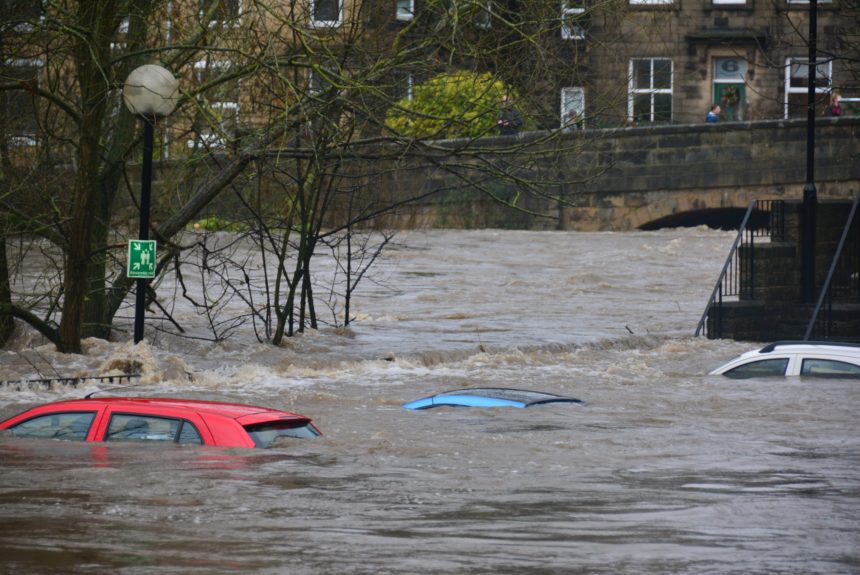Executive Summary: National Flood Insurance Program
The value of property at risk from extreme weather events, particularly on coastal lands, is rising. The current annual economic impact from hurricanes and storm-related flooding is $54 billion, $17 billion of which are direct costs to the federal government. The costs of these disasters is anticipated to rise due to the combination of increasing coastal wealth and climate change’s intensification of extreme weather events. Since neither coastal wealth concentration nor climate change is anticipated to abate in the near future, prudent policy should dictate that the federal government revisit its coastal resilience efforts and identify opportunities to mitigate the cost and suffering inflicted by natural disasters.
Current federal policy retains perverse incentives which subsidize flood insurance and thus encourage coastal residents to put themselves and their property at greater risk than they otherwise would if they were fully responsible for their own insurance. These subsidies, amounting to $1.5 billion annually, primarily are to the advantage of wealthy Americans that can afford coastal property. Even when updated flood maps (most of which are currently out of date) show heightened risk, government policies prevent any increase in premium and keep the National Flood Insurance Program (NFIP) out of actuarial soundness. The program is currently $20.5 billion in debt, even after approximately $16 billion of its debt was transferred to general taxpayers.
Aside from flood insurance practices that incentivize risky behavior, the federal government is also inefficient in its allocation of existing resources directed to coastal resilience. In 2018 alone, the Bipartisan Budget Act appropriated $28 billion to the Department of Housing and Urban Development for disaster mitigation and resilience activities. The Congressional Budget Office estimates that each dollar of resilience investment avoids $3 of later costs. The Government Accountability Office (GAO), however, has noted that as government resilience efforts are spread across multiple agencies those efforts lack a strategic approach to the allocation of resources. High value resilience efforts are not prioritized, and further a separate GAO analysis that resilience investments may overlook low-cost “natural infrastructure” (mangroves, wetlands and other naturally occurring systems that mitigate flood damage) projects that can have better benefit-cost ratios than conventional resilience infrastructure.
The R Street Institute recommends several policy changes, with the aim of mitigating the costs and harm that result from natural disasters. These recommendations are as follows:
- End NFIP subsidies and grandfathered rates for new construction in high-hazard areas.
- Wherever possible, transfer risk to the private insurance markets that are better equipped to mitigate risk.
- Update flood maps to better identify risk.
- Consider how urban development exacerbates flood risk by creating impermeable surfaces and reducing groundwater absorption potential.
- Where reasonable, consider if natural systems can more efficiently mitigate risk than artificial ones.
- Designate project coordination to a single entity to more efficiently allocate the considerable resources already invested by the federal government in resilience.
Introduction
The 2020 hurricane season had a record-breaking 30 named storms. Of these, 12 made landfall on U.S. soil, with a whopping five hammering Louisiana. Despite the hurricane season being roughly “73 percent more ‘active’ than normal,” early estimates of storm damage are $37 billion, which comes in below the expected average of $54 billion, and well below 2017’s peak of $307 billion or 2005’s $238 billion. Storm damage is rarely an exact science as it is a matter of chance if a storm will hit at just the right location to have a major impact, but the relatively low-cost of the 2020 season despite the jump in activity may indicate that improvements to federal policy on coastal resilience are finally paying off.
The federal government bears a substantial portion of the expenses of natural disasters. Most of these expenses are to repair public property, but a significant portion is dedicated to relief for households and businesses. The objectives of public policy in disaster resilience include reducing human suffering and mitigating costs to taxpayers. Appropriate public policy should focus on maximizing disaster resilience, which will require a holistic approach to effectively leverage the many federal programs related to hurricanes and storm-related flooding.
Programs like the National Flood Insurance Program (NFIP)–the government’s monopoly on flood insurance–should embrace reforms that minimize the level of risk in the insured pool and eliminate subsidies that incentivize new construction in high hazard areas. Federal spending on disaster mitigation should carefully consider opportunities for resilience that diminish future damages. Similarly, government should embrace its recent practices of considering how natural systems such as mangroves and wetlands can have comparable benefits to artificial ones, while also incidental economic benefits. And government should recognize that places that have consolidated disaster mitigation efforts into a single coordinator have had greater efficiency in their spending.
Ultimately, the costs of natural disasters are expected to rise on account of both climate change and the rising value of coastal land. As taxpayers are poised to shoulder significant burdens from disasters, emphasis should be placed on government accountability that allocates resources efficiently to mitigate long-term risk.
Done in partnership with The R Street Institute. To access the full report, download it here.


